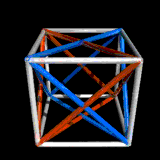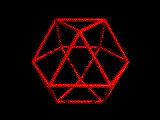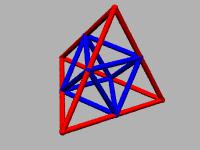Originally posted via website on Feb 13, 1997 to NCTM. This web version first created Feb 27, 1997, HTML formatting, pictures and hyperlinks added, text unchanged -- except for a fixed typo or two (including changing NCMT to NCTM) -- from the original. Pictures by Richard Hawkins and Chris Fearnley.
MEMORANDUM
Ad hoc committee for defining
new curriculum standards,
4D Solutions
 The National Council of Teachers of
Mathematics
The National Council of Teachers of
MathematicsIn response to the question:
"2. What are new issues that should be addressed in an updated version of the Standards? Click to reply."
at: http://www.nctm.org/future-standards/future-questions.htm [now defunct -KU]
Background:
Kirby Urner is a former high school math teacher and math curriculum text book consultant for McGraw-Hill, now writing public domain curriculum material for the World Wide Web in collaboration with many talented individuals. He is an award-winning explorer in the new field of synergetic geometry, author of Synergetics in the 1990s (published journal), and former webmaster for the Buckminster Fuller Institute (BFI). He holds a BA from Princeton University.
What follows is:
(A) an excerpt of a recent posting to Synergetics-L, a listserv devoted to Synergetics, followed by
(B) an excerpt from a hypothetical learning program demonstrating how some of this new curriculum material might be packaged for 10th graders
For further reading, visit the 4D Solutions website, Synergetics on the Web, at:
http://www.teleport.com/~pdx4d/index.html
(A) From a posting to Synergetics-L by K. Urner, 2/13/97, a letter to David Koski (another award-winning Synergetics explorer)...
How to best package mathematics, including geometry, most efficiently and accessibly, is one of those open questions which retrieves different answers with the times. I was the target of 'new math', heavy on the set theory. Although there's been considerable backlash, in my case that curriculum was right on. My parents, like many, maybe thought propositional calculus (so-called truth tables), Venn diagrams, and the unions and intersections of sets was way too abstract and newfangled to have much relevance to my future. But here I sit, writing in 'standard query language' (SQL) against sets of records, devising inner joins to retrieve their intersections, filtering by boolean-style propositions. I'm not claiming 'new math' was right for everyone, but I think the curriculum heads were brainstorming in the right direction for a lot of us.


 [graphics not shown]
[graphics not shown]